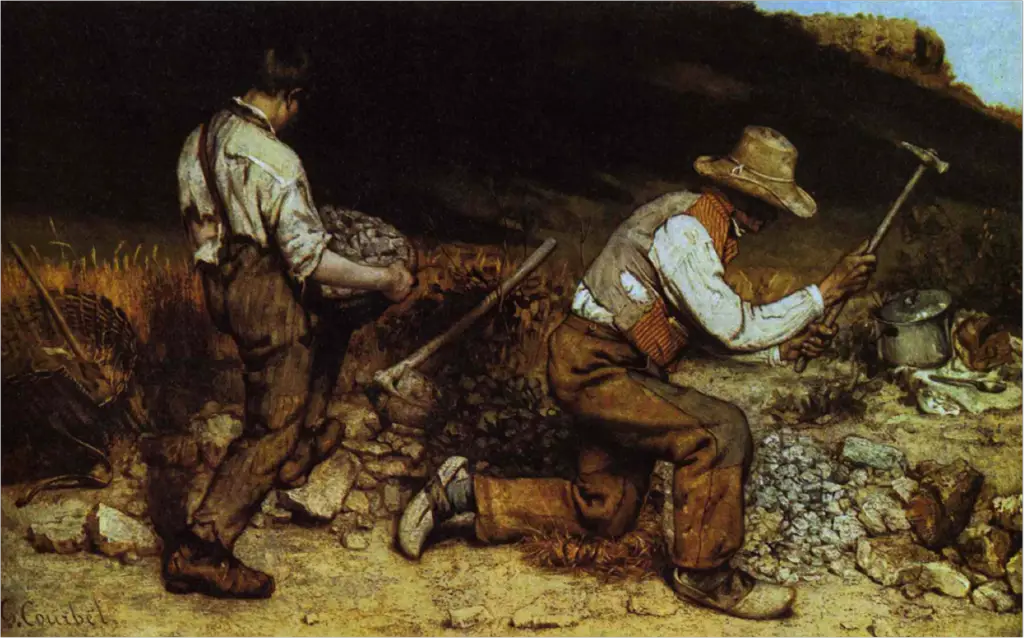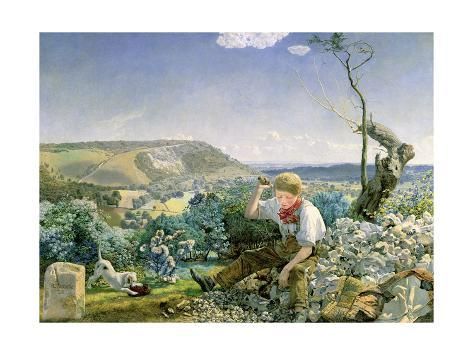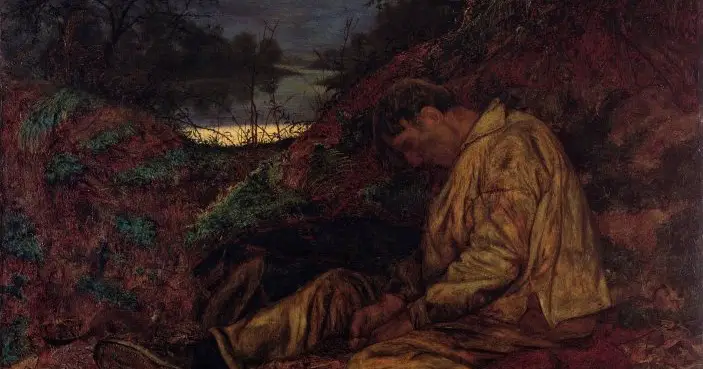The Stonebreakers by Gustave Courbet
A highly iconoclastic painting made just a year after Karl Marx and Friedrich Engels published their revolutionary pamphlet, The Communist Manifesto, Gustav Courbet’s The Stonebreakers defied all the traditional rules of French neo-classicist art.
In the painting, two men toil to break and remove the stones from a place where a road is being built. The hard work is apparent and so is the artist’s concern for the poor.

Where was The Stonebreakers painting set?
The figures were torn and shabby clothes and working with hammers. They are set against a low hill of – a scenery common in the French countryside. It might have been taken from the French town on Ornans where the artist spent most of his childhood.
The hill spreads across the top of the canvas and actually covers the whole space except the upper right corner where a little patch of the pale blue sky is visible. Courbet set it that way in order to separate the labourers; to point out that they are trapped both physically and economically.
Why was the audience shocked by Gustave Courbet’s The Stonebreakers when it was exhibited at the salon in 1850?
Courbet’s painting created a scandal when it was exhibited chiefly because it offended the upper classes to see the realism of their exploitation of the poor being reflected on the canvas.
Courbet depicts the reality with his painting. He, therefore, made one of the men too old and the other a young boy, both seemingly unfit for such back-breaking work. He did not try to glorify it. It is meant to be an accurate depiction of the deprivation and exploitation suffered by the rural workers in the mid-nineteenth century.
Like most paintings, the narrative and the artistic techniques used by the painter – the elements such as brushwork, compositions and lines – are associated. Courbet used rough brush strokes, something quite unusual in the mid-nineteenth century. He deliberately refused to focus on the usual objects most artists would focus on – the faces, hands and the foreground. Instead, he attends to the faces and the rocks equally.
Courbet makes his painting lack the basics of art, changing composition and the aerial perspective. What happens as a result is that it looks more real and believable.
The Stonebreaker by John Brett
An artist of the Pre-Raphaelite school, John Brett’s reputation was made by his painting The Stonebreaker, which is often considered to be his masterpiece. It depicts a young boy, against a beautiful landscape, breaking stones. He is accompanied by a little puppy playing away beside him.

In Brett’s painting, the details of the landscape are captured with remarkable accuracy. Like Courbet’s painting, it portrays the poor and the rural as well but in a different light. It does not have the claustrophobic ambience of Courbet’s painting, not does it contain the hopelessness of Wallis’s creation.
There is, however, an underlying realism which is not apparent at first. The boy, although well dressed, has to undertake severely laborious work. He cannot afford to stop and play with the puppy because he is working to earn his bread.
The Stonebreaker – Religious Symbolism
John Brett’s painting also carries significant religious symbolism. Brett was a deeply religious man but also had a keen interest in science. His works, therefore, often reflected the debated regarding the truth and significance of the Bible.
Some critics have suggested that the Stonebreaker represents the figure of Biblical Adam after being thrown out of Eden, and compelled to work. This idea is supported by a sketch made by Brett prior to this painting titled “Outside Eden”.
The painting is divided into two distinct halves – while the background, with its vast meadows and grove, suggests paradise, the foreground is covered with weeds, rocks and a dead tree. In some versions, the Stonebreaker is also seen as Christ who died for the sins of mankind. For his reason, he wears a white shirt symbolising innocence and a red scarf symbolic of his bleeding for the sins of humans.
Where is John Brett’s The Stonebreaker kept?
Brett’s painting is preserver in the Walker Art Gallery, Liverpool.
The Stonebreaker by Henry Wallis
In the same year as John Brett’s work, Henry Wallis, another Pre-Raphaelite artist produced his own version of The Stonebreaker. It is an oil-on-canvas painting that was first exhibited at the Royal Academy, London.

The Stonebreaker – Analysis
The painting depicts a worker worn out and tired after a long tiring day of hard labour, who seems to have fallen asleep. However, many viewers and critics are of the opinion that he might be even dead due to over-work.
Although Wallis himself never stated that the figure in his painting might be dead, the diffused colour and the view of the dusk provide it with an aura of ending or death. The hammer with which the man had been working has slipped and fallen from his grasp and he is absolutely still. An ermine has climbed on to his right leg but he is unaware of its presence.
The frame of the painting was inscribed with a line from Tennyson’s poem A Dirge: “Now is thy long day’s work done”. It further enhances the poignancy of the picture.
The Stonebreaker – Context
Wallis, it is believed, had painted the picture keeping in mind the Poor Law Amendment Act of 1834. The Act had enforced the Workhouse system on the poor and the homeless people of England and restricted any other forms of relief for them.
Thus these poor men and women were forced to work for long hours in order to be able to receive the minimum facility of food and lodging in the Workhouses. These back-breaking labours sometimes caused the death of these people.
The clothes worn by the man in the painting are those of the farmers worn in agricultural farms. It, therefore, suggests that he used to be a farmer who is forced to undertake road making jobs under changing social conditions. It thus works and commentary on the social realism of the Victorian era that Wallis portrayed on his canvas.
All the versions of Stonebreaker were hence avant-garde works of art reflecting the social and economic plight of the Victorian era, when, under the garb of aristocracy and affluence, there lay a deep-rooted reality of exploitation and abuse.